Sensor Sweep: Red Sonja, Bradbury, Tolkien, Star Wolf
Monday , 14, July 2025 Sensor Sweep Leave a commentArt (Fine Books Magazine): Frank Frazetta’s pen-and-ink Famous Funnies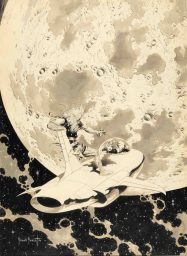 No. 214 Buck Rogers cover original art which portrays Buck Rogers sailing through space topped Heritage Auctions‘ Comic & Comic Art auction, selling for $1,035,000.
No. 214 Buck Rogers cover original art which portrays Buck Rogers sailing through space topped Heritage Auctions‘ Comic & Comic Art auction, selling for $1,035,000.
Cinema (Midnight’s Edge): The trailer for the new Red Sonja movie starring Matilda Lutz has been released, and while the movie itself may still be entertaining, this trailer went out of its way to hide it, evoking the fates of both Solomon Kane, Dredd and the Conan the Barbarian remake.
Tolkien (Walker’s Library): There is a lot of talk about fantastic adventure literarure and the place that J.R.R. Tolkien has in it. The Just So story is that Tolkien invented it. This is disprovable on a cursory examination of contemporaries and predecessors to The Hobbit’s publication.
Tolkien (A Kind of Elvish Craft): As I briefly mentioned in my previous piece in this series, in his letter to Milton Waldman, Tolkien presents an overview of his own Middle-earth mythology as a coherent, standalone body of work. However, he also pauses every now and then to offer parallels with real-world mythological and folklore motifs (which is a great boon for scholars – Tolkien wasn’t that keen on identifying his own sources).
Conventions (Sean Korsgaard): Robert E. Howard in 1935, Professional and Personal | Howard Days 2025 full panel.
New (Ken Lizzi): t has been about fifteen years in the making. As I recall, it was in 2010 that I began writing the first Cesar the Bravo story, longhand, in a notebook on a flight to Hawaii, finishing it up pool side. A rough life, I know. That story ended up in an anthology in 2011. The next couple of stories appeared a few years later. And the exploits of Cesar continued.
Who is Cesar and why should you be interested?
Science Fiction (Arkhaven Comics): The space western was a menace invoked by those who wanted a more serious science fiction in the post-pulp era. I wrote on the first space western. The only other example I am really aware of that could be called a space western is Richard Tooker’s “Zenith Rand” stories.
invoked by those who wanted a more serious science fiction in the post-pulp era. I wrote on the first space western. The only other example I am really aware of that could be called a space western is Richard Tooker’s “Zenith Rand” stories.
Art (Art of Michael Whelan): Arguably few artists have made as massive of an impact on the field of fantasy as Michael Whelan. Driven by boundless imagination, his vibrant palette and realistic style have influenced the generations of illustrators who followed.
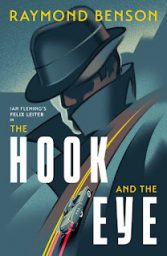 James Bond (Book Bond): Just a heads up that you can now read Raymond Benson’s entire Felix Leiter spin-off adventure, The Hook and the Eye, from Ian Fleming Publications. The original plan was to release the book in chapters, but due to a technical issue, IFP decided to post the entire book now.
James Bond (Book Bond): Just a heads up that you can now read Raymond Benson’s entire Felix Leiter spin-off adventure, The Hook and the Eye, from Ian Fleming Publications. The original plan was to release the book in chapters, but due to a technical issue, IFP decided to post the entire book now.
Tolkien (Stuff I Like): The Hobbit is a children’s book, written as one and presented as one. Part of why it holds up so well on so many rereadings for me as an adult is because it’s charming. There’s a delightful playfulness to most of the encounters. The trolls are Cockney yobs. The Great Goblin isn’t terrifying, but imperiously ridiculous. Bilbo starts as wonderfully, ridiculously proper middle-class character, thrust, only mostly against his will, into a wilder and woolier world reacts in just the way most of us would in similar circumstances.
me as an adult is because it’s charming. There’s a delightful playfulness to most of the encounters. The trolls are Cockney yobs. The Great Goblin isn’t terrifying, but imperiously ridiculous. Bilbo starts as wonderfully, ridiculously proper middle-class character, thrust, only mostly against his will, into a wilder and woolier world reacts in just the way most of us would in similar circumstances.
Fantasy (Fandom Pulse): In the sphere of Modern genre fiction, few names spark as much excitement—or as much debate—as Brandon Sanderson. His intricate magic systems and meticulous world building have inspired countless writers to follow in his footsteps. But as the publishing industry continues to evolve, it’s becoming clear that a new generation of writers, particularly web novelists within the “Literary Role-Playing Game.”
Conventions (Pulpfest): As of early July, the PulpFest 2025 Auction had just over 200 lots of material that will be up for bid. All of the lots submitted have been cataloged, photographed, and uploaded to our auction page. You’ll find our photographic catalog by clicking the “2025 Auction” button located on the top menu of our website.
Cinema (Kairos): Many insiders have quietly admitted what the rest of the country is only beginning to suspect: The Hollywood system is in terminal decline.
Myth (Silver Key): “Myths formulate things for you. They say, for example, that you have to become an adult at a particular age. The age might be a good average for that to happen—but actually, in the individual life, it differs greatly. Some people are late bloomers, and come to particular stages at a relatively late age. You have to have a feeling for where you are. You’ve got only one life to live, and you don’t have to live it for six people. Pay attention to it.”
D&D (Clownfish TV): Remember Cynthia Williams? The boss of Wizards of the Coast who pushed for the DnD OGL 1.1 and (likely) the VTT? Well, after she “got gone” from WotC, she landed at Funko… and only made it a year. Then we talk about TTRPGs being tied up by the Diamond bankruptcy.
Science Fiction (Vintage Pop Fiction): Untouched by Human Hands is an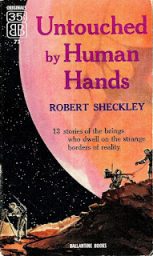 early collection of short stories by American science fiction writer Robert Sheckley (1928-2005). It’s immediately apparent that Sheckley has a knack for creating truly bizarre alien races. Races that are physically incredibly alien, and socially and culturally incredibly alien. And alien in really interesting ways.
early collection of short stories by American science fiction writer Robert Sheckley (1928-2005). It’s immediately apparent that Sheckley has a knack for creating truly bizarre alien races. Races that are physically incredibly alien, and socially and culturally incredibly alien. And alien in really interesting ways.
Robert E. Howard (Swordslore): Out of the blue, Deuce Richardson from DMR Books, an independent publisher of heroic fantasy that has featured some of my stories, reached out to ask if I would help translate the title of a Robert E. Howard poem from the Irish language: “Feach Air Muir Lionadhi Gealach Buidhe Mar Or.”
Bradbury (Dark Worlds Quarterly): I can honestly say that Ray Bradbury was as influential in my own writing of very short stories as were Saki, Fredric Brown, O.Henry, John Collier, James Thurber, William Tenn, Robert Sheckley and Harlan Ellison. The decision to tell a short in a brief flash of surprise is actually counter-intuitive for a profession that gets paid by the word. I think Ray’s contribution was the idea that the title is the starting place and very important.
was as influential in my own writing of very short stories as were Saki, Fredric Brown, O.Henry, John Collier, James Thurber, William Tenn, Robert Sheckley and Harlan Ellison. The decision to tell a short in a brief flash of surprise is actually counter-intuitive for a profession that gets paid by the word. I think Ray’s contribution was the idea that the title is the starting place and very important.
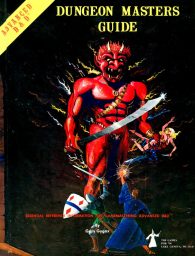 Appendix N (Pulp Super Fan): I’ve always felt it important for creative people to recognize their inspirations. Some are good at that, others not so much. An excellent example of this appeared in 1979 with the Dungeon & Dragons role-playing game. That year, Gary Gygax, who created this game, put out The Advanced Dungeons and Dragons Dungeon Master’s Guide. This was written to help those who run D&D games, called dungeon masters.
Appendix N (Pulp Super Fan): I’ve always felt it important for creative people to recognize their inspirations. Some are good at that, others not so much. An excellent example of this appeared in 1979 with the Dungeon & Dragons role-playing game. That year, Gary Gygax, who created this game, put out The Advanced Dungeons and Dragons Dungeon Master’s Guide. This was written to help those who run D&D games, called dungeon masters.
Digests (Black Gate): After 25 years of buying vintage digest magazines on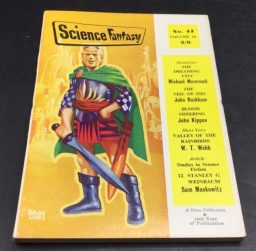 eBay, I’m rarely surprised. But I was left with my jaw hanging open last week when a set of 28 Science Fantasy magazines offered on eBay (above) blew past my $98 maximum bid, and ended up selling 9 minutes later for $1,580.
eBay, I’m rarely surprised. But I was left with my jaw hanging open last week when a set of 28 Science Fantasy magazines offered on eBay (above) blew past my $98 maximum bid, and ended up selling 9 minutes later for $1,580.
 Review (Rough Edges): After reading Fred Blosser’s sword and sorcery novella SWORDS OF PLUNDER recently, I was in the mood to dive back into more of his work. I picked his collection SWORDS OF THE CRAGS. This volume collects six stories that might have been the sort of thing Robert E. Howard wrote for the Spicy pulps in the mid-Thirties.
Review (Rough Edges): After reading Fred Blosser’s sword and sorcery novella SWORDS OF PLUNDER recently, I was in the mood to dive back into more of his work. I picked his collection SWORDS OF THE CRAGS. This volume collects six stories that might have been the sort of thing Robert E. Howard wrote for the Spicy pulps in the mid-Thirties.
Pulp (Paperback Warrior): We’ve covered three Jack Karney novels here on Paperback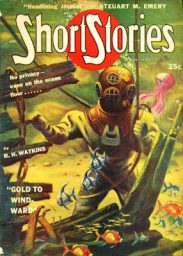 Warrior and we’ve covered his life and literary work on the podcast. I wanted to experience Karney’s short-story writing style, which is steeped in boxing stories and the fighter lifestyle. There’s a few scans that float around online and the one I gravitated towards is “The Bells Are Ringing”. It was published in the November 25th, 1947 issue of Short Stories.
Warrior and we’ve covered his life and literary work on the podcast. I wanted to experience Karney’s short-story writing style, which is steeped in boxing stories and the fighter lifestyle. There’s a few scans that float around online and the one I gravitated towards is “The Bells Are Ringing”. It was published in the November 25th, 1947 issue of Short Stories.
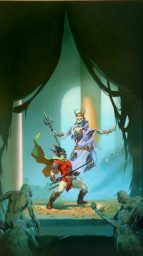 Art (DMR Books): Thanks to his excellent Substack, Michael Whelan reminded me that today is his seventy-fifth birthday. Despite the fact that I almost died this past Thursday, was I going to let this anniversary pass without proper respects? I say thee, “Nay!” Respects will be paid to one of the greatest SFF/Horror artists who has ever brushed paint upon canvas.
Art (DMR Books): Thanks to his excellent Substack, Michael Whelan reminded me that today is his seventy-fifth birthday. Despite the fact that I almost died this past Thursday, was I going to let this anniversary pass without proper respects? I say thee, “Nay!” Respects will be paid to one of the greatest SFF/Horror artists who has ever brushed paint upon canvas.
D&D (Grognardia): Like its predecessors, Steading of the Hill Giant Chief and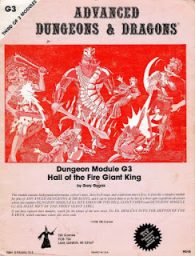 The Glacial Rift of the Frost Giant Jarl, Hall of the Fire Giant King (AD&D module G3) casts the player characters in the role of elite agents tasked with stopping a wave of giant-led attacks against civilized lands. At first glance, G3 seems to follow the familiar pattern established by the earlier modules
The Glacial Rift of the Frost Giant Jarl, Hall of the Fire Giant King (AD&D module G3) casts the player characters in the role of elite agents tasked with stopping a wave of giant-led attacks against civilized lands. At first glance, G3 seems to follow the familiar pattern established by the earlier modules
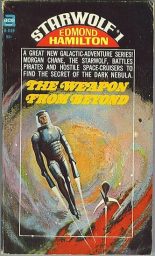 Science Fiction (Fantasy Literature): I’d been hankering for another dose of latter-day Hamilton ever since, and this trinity thus seemed made to order. The three books in question are the so-called STARWOLF TRILOGY, and are comprised of the novels The Weapon From Beyond (1967), The Closed Worlds (1968) and World of the Starwolves (also 1968). For the sake of convenience, I will be examining the books individually here, starting, of course, with The Weapon From Beyond.
Science Fiction (Fantasy Literature): I’d been hankering for another dose of latter-day Hamilton ever since, and this trinity thus seemed made to order. The three books in question are the so-called STARWOLF TRILOGY, and are comprised of the novels The Weapon From Beyond (1967), The Closed Worlds (1968) and World of the Starwolves (also 1968). For the sake of convenience, I will be examining the books individually here, starting, of course, with The Weapon From Beyond.
Cinema (Glitternight): The buzz surrounding the planned reboot of Indiana Jones reminded me of my blog post from five and a half years ago. That post was prompted by the news that Steven Spielberg declined to direct the upcoming fifth movie in the Indiana Jones franchise –
Lovecraft (John Coulhart): I was surprised to find much more than this, with Murphy discussing and contextualising my adaptations of The Haunter of the Dark and The Call of Cthulhu. The bulk of his essay concerns the series of doorstop adaptations that Gou Tanabe has been producing for the past decade (most of which I’ve only seen as extracts), but Murphy’s knowledge of both Lovecraft’s fiction and comics history is very thorough.
Robert E. Howard (Black Gate): So basically, I don’t do horror. Robert E. Howard is my second-favorite writer in any genre (trailing only John D. MacDonald), and I’m not really even that into his horror stuff. “Pigeons from Hell” is considered one of his best stories, but I don’t really like it. Other than a few exceptions, like the terrific Robert R. McCammon, and F. Paul Wilson, horror doesn’t work for me (no, I don’t really care for Lovecraft, either, though I’m well-versed thanks to those old Del Rey paperbacks).
Art (Pulp Super Fan): I finally picked up Boris Dolgov by David Saunders. It is a biography and art portfolio of Boris Dolgov (1910-58), who did a couple of hundred interior story illustrations for the pulps, mainly Weird Tales, and a handful of Weird Tales covers. His first, from the November 1946 issue, is used as the cover for the volume. We also get a listing of all his artwork and reproductions of most of his artwork, as well as all his covers in color.
is a biography and art portfolio of Boris Dolgov (1910-58), who did a couple of hundred interior story illustrations for the pulps, mainly Weird Tales, and a handful of Weird Tales covers. His first, from the November 1946 issue, is used as the cover for the volume. We also get a listing of all his artwork and reproductions of most of his artwork, as well as all his covers in color.
Please give us your valuable comment